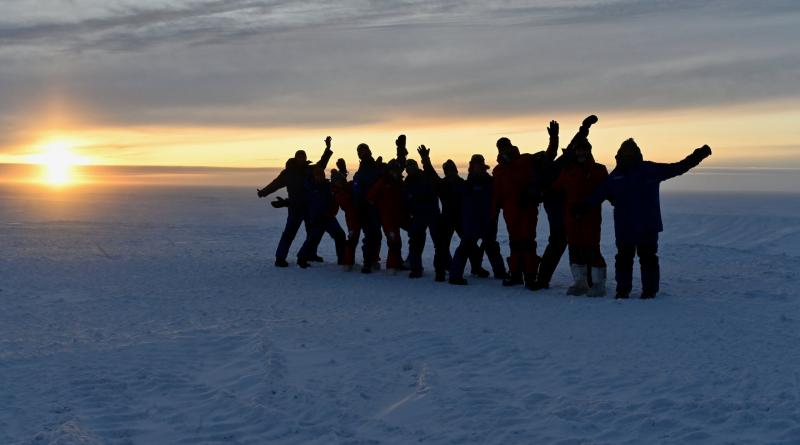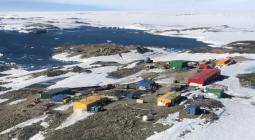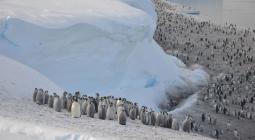Last Antarctic sunset.

The 16th crew at Concordia research Station in Antarctica to spend a full winter at the facility, wave goodbye to the Sun as it descends below the horizon, not to return for four months.
Sunday 3 May marked the start of the crew’s winter-over period. The 12-member group will spend the next few months in gradual and total darkness. This is in addition to their nine-month isolation in one of the most extreme environments on Earth.
Concordia research station is one of three stations operating year round for science in the middle of the Antarctic ice sheet. Located at Dome C on the Antarctic peninsula, the station sits 3200 m above sea level.
If the altitude does not steal your breath, the cold certainly will: temperatures can drop to –80°C in the winter, with a yearly average temperature of –50°C.
Isolation in a cold, dark environment on Earth makes an ideal stand-in for space to better prepare us for exploration of our Solar System. Researchers come to Concordia to study not only astronomy, meteorology and glaciology but also human physiology and psychology.
Researchers are interested in how this extreme environment can be a risk to the human body and mind. Data from these studies is preparing humans for life in outer space beyond low Earth orbit.
ESA-sponsored medical doctor Stijn Thoolen coordinates this year’s biomedical research experiments at Concordia to assess the prolonged effects of isolation on the human body and mind.
He collects blood, stool and urine samples to track changes in blood volume, immune system and gut bacteria and how they impact our health. Stijn also facilitates stress and coordination tests and follows social dynamics to understand the roles stress plays in making or breaking a group in isolation.
The coming months will prove the most challenging for the group but potentially also the most rewarding.
Follow the adventures at Concordia on the blog.
18 May 2020
European Space Agency




